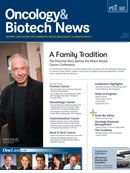Publication
Article
Oncology & Biotech News
Where Are the Drugs?
Author(s):
In 2011, the FDA reported 232 cancer therapies to be in limited supply. As a result, many patients have had therapies delayed or discontinued, and in some cases, patients have been left without access to appropriate alternatives.
Andrew L. Pecora, MD
Editor-in-Chief Chief Innovations Officer, Professor, and Vice President of Cancer Services John Theurer Cancer Center at Hackensack University Medical Center
For more than 50 years, this country has funded our best scientists and clinicians to develop and test drugs that are proven to prolong and save the lives of patients with cancer. It seems incredulous that we are now running out of these life-saving medications. In 2011, the FDA reported 232 cancer therapies to be in limited supply. As a result, many patients have had therapies delayed or discontinued, and in some cases, patients have been left without access to appropriate alternatives. It appears that there is no single cause to this dangerous problem, but a common contributing factor seems to be an apparent lack of financial incentive for drug companies to continue to manufacture agents that are older and on generics lists, despite the needs of the patients. Further complicating the problem is the growing influence of the so called “Grey Market,” where products are bought and sold outside of the manufacturer’s authorized trading channels, creating an opportunity for secondary distributors to significantly mark up the cost of drugs.
When we stop to consider the range of factors involved in maintaining appropriate supplies of these drugs, we must first look to the regulatory and market conditions that influence manufacturing. Drugs are created using current good manufacturing practices (cGMPs). cGMP manufacturing creates a standard, proscribed and regulated by the FDA, that is intended to assure the public that a drug is potent and free of contaminants. These standards, while assuring public safety, add considerably to the cost and time to manufacture and distribute a drug. When faced with the decision to manufacture a drug that is coming off patent protection and has a very limited ability to generate a profit, or to manufacture a newly patented drug with the profit margin intact, pharmaceutical companies would appear to have a duty to their shareholders and employees to cut their losses and switch over manufacturing capacity to the new drug. Companies that choose to continue to manufacture low-margin generic drugs will cut costs to drive a profit margin that limits their capacity to ensure quality. As a result, a number of manufacturers have been shut down for quality issues.
“
In 2011, the FDA reported 232 cancer therapies to be in limited supply. As a result, many patients have had therapies delayed or discontinued, and in some cases, patients have been left without access to appropriate alternatives.”
—Andrew L. Pecora, MD
So, let’s do the math. As a nation, we have invested untold billions of dollars to develop drugs that prolong and save lives. However, we have decided that the cost of healthcare is too expensive, and therefore have demanded substantial reductions in what we pay for the very drugs that we invested billions to develop. In essence, we are asking a segment of our market to forget free-market capitalism, and demanding that these companies produce drugs at low margins because we need them.
When all is said and done, we are left with 232 cancer therapies in limited supplies. Hmm, that’s a shocker.
In limiting the cost of drugs, it appears that we have created drug shortages, lower-quality manufacturing, and “Grey Markets” that substantially increase the cost of the limited supply of available drugs.
Perhaps we should consider paying fair-market value for drugs that really work and less for those that do not. Or even better, why not extend patent expirations on efficacious drugs until a more effective replacement is available?
We learn early on in life that there are no “free lunches.” In this case, not only are patients left hungry, but they’re also in jeopardy of having their lives unnecessarily cut short from our own efforts to limit free-market enterprise.









